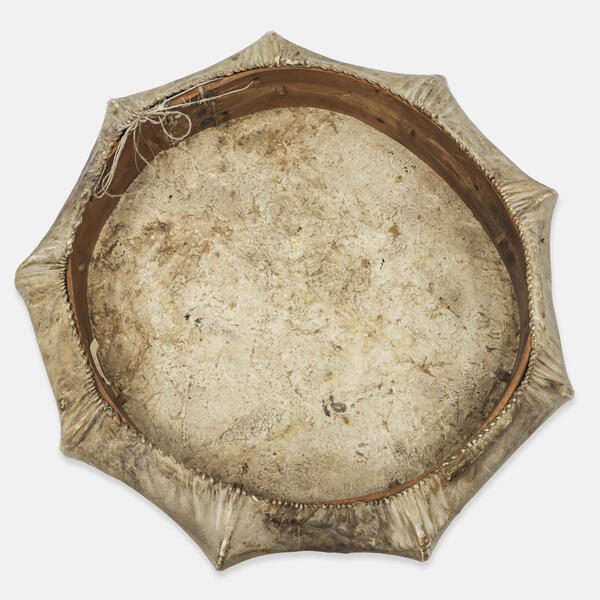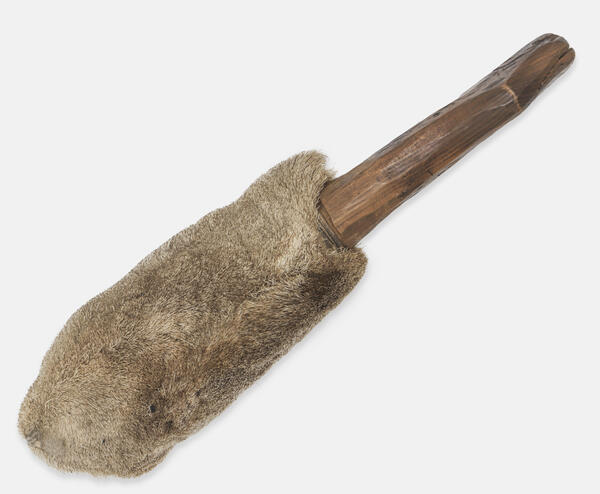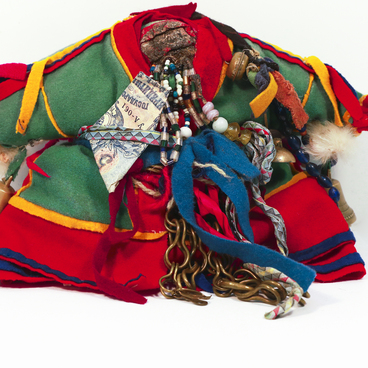The Museum Association of the Nenets Okrug owns a unique collection of Nenets cult objects from the Arkhangelsk tundra. These include idols, patron spirits, shaman’s clothes, jackets, masks, and attributes, including drums, beaters, dolls, and spirit helpers.
According to the worldview of the northern peoples, a shaman was an interactor between the world of people and spirits. He performed a ritual of kamlanie — communicating with the spirits in a state of trance — and participated in all important ceremonial events, including holidays, weddings, rites of passage, and funerals. People turned to the shaman for help and advice, and asked for support before a long journey, in case of illness, or any troubles.
The main attributes of a shaman were a drum — known as a “penzer” in Nenets — and a beater. By striking the drum rhythmically, dancing, and singing, a shaman contacted the spirits and called them to the earth. In Nenets culture, a drum symbolizes a reindeer which takes the shaman on a journey between the Upper, Middle, and Lower worlds.
The drum was made by craftsmen who were not related to the shaman. The drum from the museum’s collection was made of wood and deer hide in the late 19th century. Along the outer edge of the frame, there are twenty-six wooden projections that form a resonator.
On the inside of the drum, there is a Y-shaped handle made of two wooden crossbars fastened to the frame with leather straps. It is decorated with carvings, chains, small metal pendants, and round plates. The sound of the drum has always been considered sacred and is believed to drive away evil spirits and attract helpers.
The frame of the Nenets drum was made of softwood — larch or cedar. The hide of a wild or domestic male deer was stretched on top of it. The skin was carefully dressed and treated with smoke.
The beater for the Nenets drum was made of wood, shaped like a spatula with a handle. The wide part was wrapped in deer hide or rovduga — reindeer suede — and tied with a thin tendon thread. Shamans from the European tundra often used a hare’s or dog’s foot, a reindeer’s leg, or a stick covered with wolverine skin as a drum beater.
In the second half of the 20th century,
the drum lost its sacred meaning and became a musical instrument, often used in
folk music groups of the peoples of the North.







